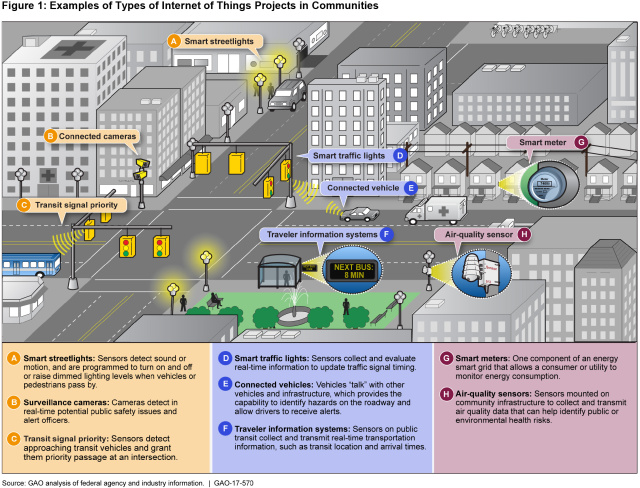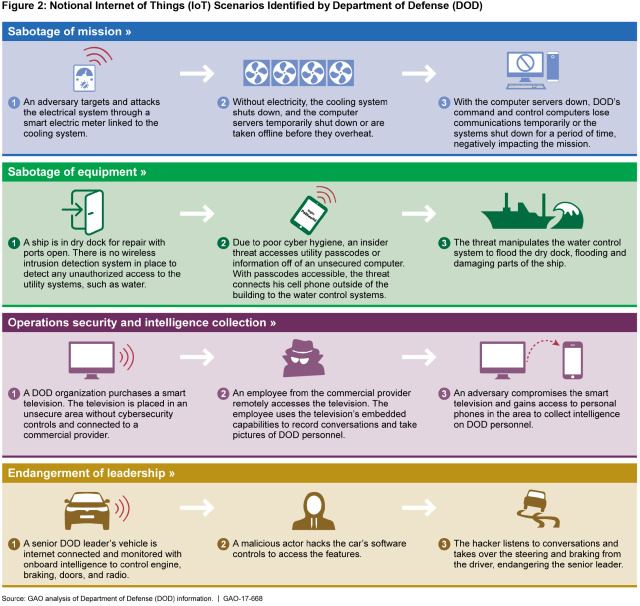Our Increasingly Connected World — The Internet of Things
(Excerpted from GAO-17-75)
Other wearable devices include baby clothes that monitor respiration, temperature, and activity level, and football helmets that detect and analyze impacts and notify medical staff if needed. The rapid emergence of these and other connected devices brings the promise of new benefits, but also presents potential challenges in areas like information security and privacy. Communities are becoming smarter Individuals aren’t the only ones benefitting from the Internet of Things—local governments and their partners are making their communities “smarter” to improve livability, service delivery, or competitiveness. Perhaps you’ve noticed that traffic lights stay green longer during rush hour? That’s because some lights now have sensors that collect, evaluate, and adjust to real-time traffic data—seeking to ease congestion and reducing emissions. But becoming “smarter” isn’t easy, cheap, or fast. Communities we spoke to talked about the importance of collaboration among public, private, and academic entities to make the best use of unique expertise. To help out, the federal government brought together more than 20 federal agencies to develop a federal strategic plan and a resource guide for communities.Communities are also using federal funds in combination with other resources—both financial and non-financial—to plan and deploy smart projects.

(Excerpted from GAO-17-570)
Security in the age of IoT When you think about smart watches, TVs, or phones, you probably don’t think “national security risk.” Well the Department of Defense does. DOD has identified numerous security risks associated with IoT devices as well as some scenarios that could hurt their operations and personnel.(Excerpted from GAO-17-668)
We found that DOD’s security policies and guidance do not clearly address these security risks. For example, the agency doesn’t have sufficient guidance on minimizing the risks of smart TVs in unsecured areas or on applications installed on DOD’s mobile devices. Updating these policies could better protect the information that DOD stores on IoT devices—and help reduce the risks to national security. To learn more about the Internet of Things, potential benefits, and potential threats, check out our full technology assessment.- Questions on the content of this post? Contact Chuck Young at youngc1@gao.gov.
- Comments on GAO’s WatchBlog? Contact blog@gao.gov.

GAO's mission is to provide Congress with fact-based, nonpartisan information that can help improve federal government performance and ensure accountability for the benefit of the American people. GAO launched its WatchBlog in January, 2014, as part of its continuing effort to reach its audiences—Congress and the American people—where they are currently looking for information.
The blog format allows GAO to provide a little more context about its work than it can offer on its other social media platforms. Posts will tie GAO work to current events and the news; show how GAO’s work is affecting agencies or legislation; highlight reports, testimonies, and issue areas where GAO does work; and provide information about GAO itself, among other things.
Please send any feedback on GAO's WatchBlog to blog@gao.gov.


